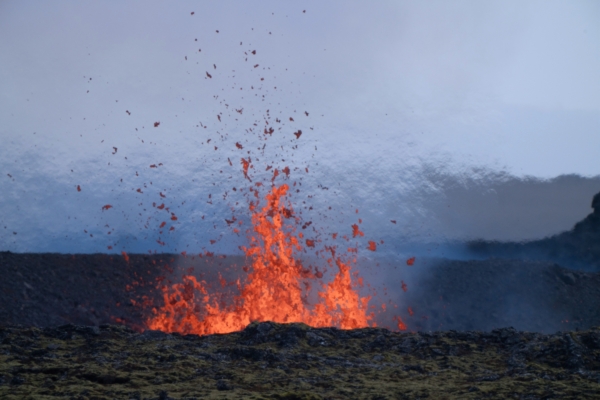On Tuesday (April 1), a volcano in southwest Iceland erupted once again, continuously spewing lava and smoke. Residents and tourists in the nearby fishing village of Grindavik have been urgently evacuated, while air traffic continues to operate as usual. This marks the 11th eruption in recent years following a resurgence in geological activity in the volcanic zone.
The Icelandic Meteorological Office (IMO) issued a statement on Tuesday, confirming that the eruption had begun in the Sundhnuksgigar Crater Row located on the Reykjanes Peninsula. Live footage showed magma gushing from a crack in the ground.
The department earlier announced that they would be sending a helicopter to “confirm the exact location and scale of the eruption.”
Local media reported that around 6:30 AM on Tuesday, the volcanic zone began experiencing “earthquake swarms” with lava flow. By around 9:45 AM, the volcano officially erupted, with the lava breaking through protective barriers near the village of Grindavik. As a result, a hot water pipeline in the northern part of the village ruptured.
Due to early warnings issued by geologists in the early hours of the day, emergency services evacuated residents from Grindavik and nearby popular tourist destination Blue Lagoon hours before the volcanic eruption.
According to data released by the Icelandic Meteorological Office, the total length of the fissure from this volcanic eruption has reached 1,200 meters.
It is reported that the current eruption has not directly impacted the capital city of Reykjavik and volcanic ash has not significantly spread into the troposphere to disrupt air travel, thus avoiding any interruptions in air traffic.
Iceland, known as the land of ice and fire, due to its many glaciers and volcanoes, has seen 11 volcanic eruptions in the southern part of the Reykjanes Peninsula since 2021. Prior to this, geological activity in the region had been dormant for over 800 years. At that time, volcanologists warned that the volcanic activity in the area had entered a “new era.”

